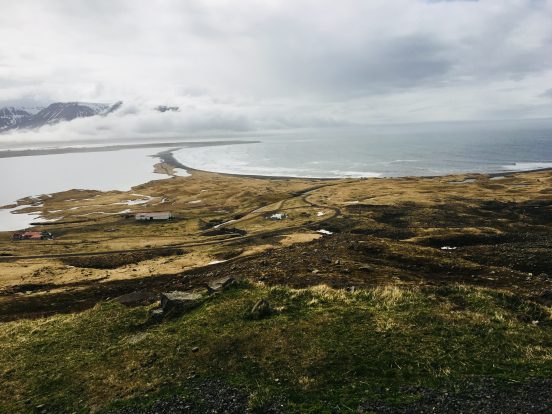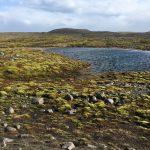From our visit to the Herring Era Museum, we’ve learned the importance of this fish to Iceland’s fishing industry. During the 20thcentury, it helped provide lower class people with sufficient savings to invest in a better education and housing (Hamilton & others, 2004). This built up the middle class that was crucial for modernizing Iceland. However, with pressures both from overfishing and climate change, the fishing stock was soon depleted from 1950s onwards. The industry has proved to be unsustainable. In this entry, I will be discussing the importance of the herring industry in Iceland’s economy during the 20thcentury, the influence of climate change, and the current state of herring in the ecosystem.
Rise of herring industry
Owing to the convergence of the North Atlantic Oscillation and Arctic Oscillation, Iceland is situated in a unique location that attract fish to thrive. Siglufjörður, a small town in northern Iceland was the perfect location for herring fishing. It was in the amidst of the Herring feeding area as seen in figure 1.However, herring fishing was influenced by the Norwegians who came to Icelandic waters.Their herring processing company in Iceland provided “herring-salting jobs, rented lots, and built wooden houses” in 1880(2004). The Icelanders quickly caught on and opened their own herring company in Siglufjörður and Eyjafjörður in the same year. Herring is a rather profitable fish, which makes for a good business model. They are plankton feeders that travel in masses, making them easy to catch in the feeding area. They are vastly versatile as they can be used for animal or fish fodder, fish oil for lighting, and making glycerin which is used for making explosives. It is estimated that “between 10000 and 25000 tons per year in the first few decades of the 20thcentury”(2004). Siglufjörður became the fifth largest town in Iceland, with population growing by tenfold from 144 to 1450 in 1903-24. There were also many seasonal workers throughout May to October.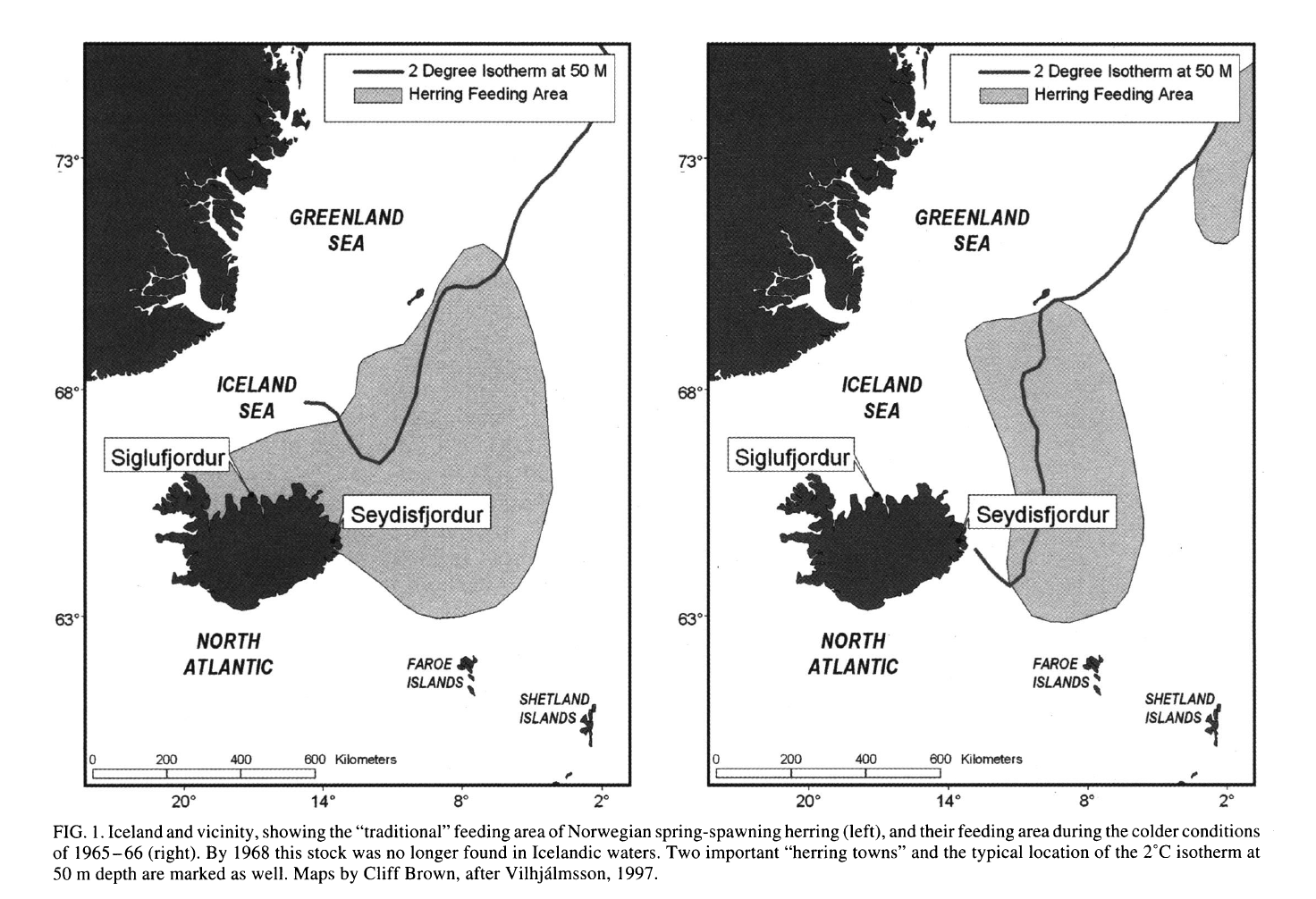
However, the industry collapsed in the 1960s as quickly as it started. As shown in this graph, the population of herring peaked in 1940s to 1950s, and gradually decreased after that. There were problems with overfishing and catching too early in the life cycle. Other than Iceland and Norway, the surrounding northern countries such as Soviet Union were coming for herring as well(Herring Era Museum, 2018). Moreover, it was reported that approximately 500,000 tons of juvenile herring were caught outside of Icelandic waters in 1967 and 1968(Hamilton & others, 2004). This cuts the life cycle short and is an unsustainable method for fishery. Aside from issues of overfishing, climate change played a part in the fall of herring industry in Iceland. With the temperatures rising, countries in higher latitudes are more susceptible to its irreversible changes. One of which ended the herring era was beginning of Great Salinity Anomalies. The GSA70s lasted between 1968 to1972(Matthíasson, 2003). This phenomenon describes the addition of freshwater into the sea that lowers the salinity. In turn, the waters were no longer favorable for herring to thrive.
Paving way to sustainable fishery
Leading up to its collapse, there were minor policies made aiming to make the industry more sustainable. In 1966, landing of small herring was banned. It wasn’t until 1969 that the TAC system was introduced, limiting the total allowable catch for fishermen(2003). At that point, the herring population was already dropping steadily. This was particularly tough on Siglufjörður’s community since it was the town’s major source of income. After TAC was introduced which gradually transitioned into ITQ (individual transferrable quotas), the herring population recovered. However, recent events on Kolgrafafjörður leads me to question whether the current management style is working.
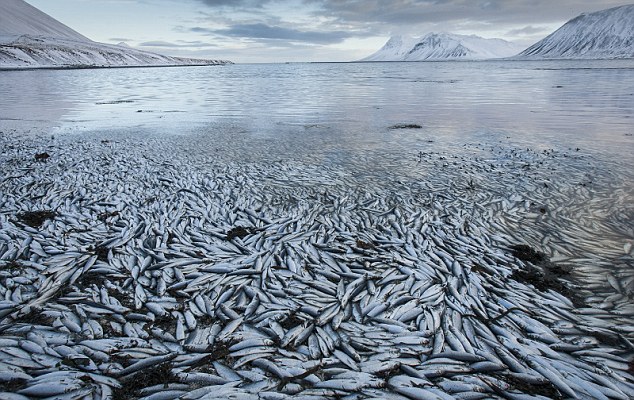
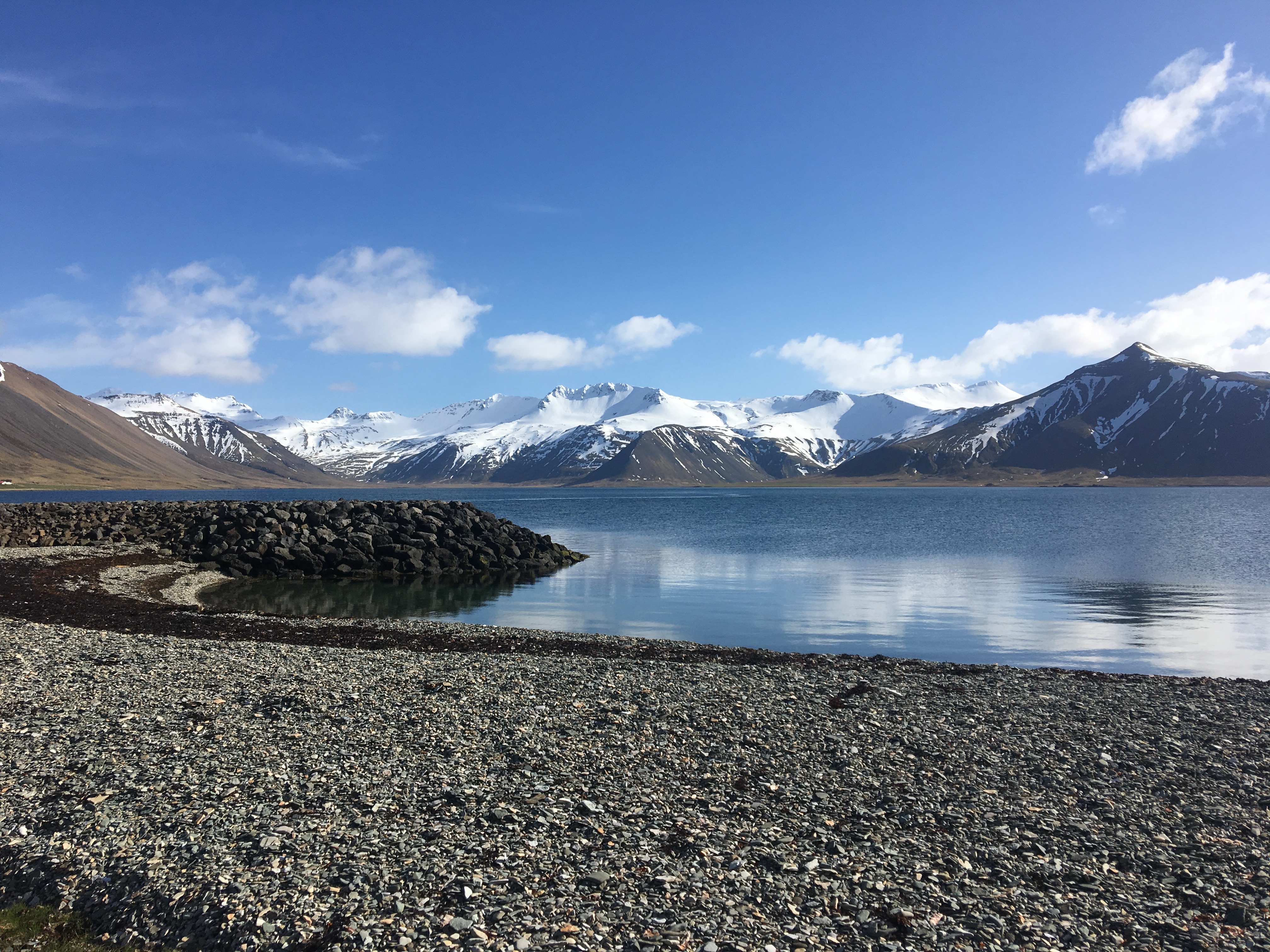
Kolgrafafjörður was one of our last stops before returning to Reykjavik in Snæfellsnes peninsula. It was there that the Herring Apocalypse took place in 2013. This mass death resulted in loss of 25000 to 30000 tons of herring lost (Webb, 2013). BiologistRóbert Arnar Stefánsson believe it could be due to construction of the bridge, which deprived oxygen needed for the fish to survive.
Whether it is overfishing, climate change, or bridge construction, herring population in Iceland is deeply affected by anthropogenic forces. While the herring are susceptible to our actions, Iceland is also dependent on the health of herring population. Fisheries is still one of the biggest industry for the country. As one of the environmental leaders of the world, Iceland needs to set an example for other countries in sustainable fisheries.
Bibliography
Hamilton, L.c., S. Jónsson, H. Ögmundardóttir, and I.m. Belkin. “Sea Changes Ashore : The Ocean and Icelands Herring Captial.” Arctic57, no. 4 (December 01, 2004). Accessed June 15, 2018. doi:10.14430/arctic511.
Matthiasson, Thorolfur. “Closing the Open Sea: Development of Fishery Management in Four Icelandic Fisheries.” Natural Resources Forum27, no. 1 (2003): 1-18. Accessed June 15, 2018. doi:10.1111/1477-8947.00036.
Stefánsson, Höfundar. “Síld Og Fuglar í Kolgrafafirði [Birds And… (PDF Download …” January 2013. Accessed June 17, 2018. https://www.bing.com/cr?IG=8648BC432EA442A19EE7467E654E94D5&CID=21505CBDA22D6E1724D050ACA3D06F68&rd=1&h=3W97Czw7_QNzBhu2G2jV4X_4en3D8ggDCWqxtUkKCBY&v=1&r=https://www.researchgate.net/publication/319242889_Sild_og_fuglar_i_Kolgrafafirdi_Birds_and_herring_in_Kolgrafafjordur_Iceland_The_consequences_of_a_herring_mass_mortality_event_for_birdlife&p=DevEx.LB.1,5080.1.
Webb, Sam. “The Herring Apocalypse: Fish worth Millions in Exports Die in Icelandic Lake after Building Work ‘starves Them of Oxygen’.” Daily Mail Online. February 05, 2013. Accessed June 17, 2018. http://www.dailymail.co.uk/news/article-2273992/The-herring-apocalypse-Fish-worth-millions-exports-die-Icelandic-lake-building-work-starves-oxygen.html.
